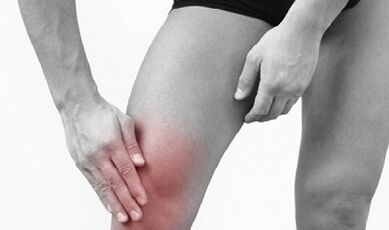
One of the most common pathologies of the musculoskeletal system is the arthrosis of the knee joint (otherwise gonartrosis) is a chronic disease, accompanied by dystrophy and the destruction of the articular structures of the knee.
The result of destructive processes is a sharp restriction or complete loss of joint mobility, and as a result - a decrease in performance, disability.
It is possible to prevent adverse consequences only if you are early diagnosed and therapy in time.
Reasons
By origin, the knee arthrosis is primary and secondary.Primary develops as an independent disease, is more often diagnosed in older people, and in this case is due to age -related changes occurring in the tissues.Secondary gonarthrosis becomes the result of other diseases and disorders in the body.
The development of gonarthrosis contributes to:
- injuries (dislocations, fractures, meniscus damage);
- diseases of the musculoskeletal system (congenital deformation of the legs, knee dysplasia, chondrocalcinosis, arthritis, osteoporosis);
- constant high loads on the joint due to professional activities, professional sports;
- overweight, obesity;
- endocrine diseases, including diabetes, hypothyroidism, acromigaly;
- metabolic disorders;
- Genetic predisposition.
Symptoms
Inflammation with arthrosis of the knee joint is accompanied by two main clinical manifestations - pain and edema.The intensity and frequency of the appearance of pain depends on the depth of damage to the joint structures.At the initial stage, pain is felt only with a load, quickly passes at rest.With advanced gonarthrosis, aching pain is constantly present, intensifies during movements, with a change in weather.
Other signs of arthrosis of the knee joint:
- crunch when moving;
- stiffness in the joint, violation of the motor function;
- The deformation of the knee (with neglected gonarthrosis).
Gonarthrosis can be accompanied by a synovitis (accumulation of fluid in the joint cavity) and the subsequent formation of a baker cyst (elastic formation on the back of the knee).
Degree of arthrosis

Symptoms of arthrosis of the knee joint differ depending on the depth of damage to the structures of the knee, and therefore the 3 stages of pathology are distinguished.
- Arthrosis of the knee joint 1 degreeIt is manifested by weak soreness at loads (at rest passes at once), with a slight stiffness after sleep.In the radiographic picture, an insignificant narrowing of the joint gap (less than a third), the presence of single osteophytes (bone outgrowths) is noted.
- Arthrosis of the knee joint 2 degreesIt is accompanied by pain and characteristic crunch during movements.The pain persists for some time at rest.Morning stiffness, restriction of the amplitude of movements is noted.Diagnostic procedures reveal a pronounced narrowing of the joint gap (more than half) and multiple osteophytes.
- Arthrosis of the knee 3 degreesIt is accompanied by constant aching pain, which, during movements and at night, intensifies.The morning stiffness remains longer than an hour with an exacerbation of inflammation and at least half an hour - during periods of remission.The mobility of the joint is sharply limited or completely lost.In the radiographic picture, multiple large osteophytes, cysts are visible.The joint gap is narrowed by more than two -thirds from the norm.
Depending on the degree of arthrosis of the knee joint, the patient is prescribed conservative or surgical treatment.
Diagnostics
Diagnosis of arthrosis of the knee joint includes visual examination, analysis of the patient’s complaints, laboratory tests (urine analysis, general and biochemical blood tests) and instrumental examination methods.
The following diagnostic procedures allow you to confirm or refute the diagnosis:
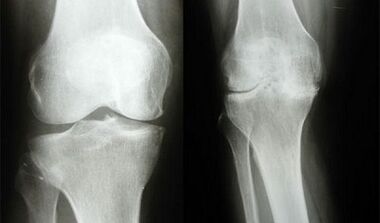
- radiography;
- Ultrasound (ultrasound);
- MRI (magnetic resonance imaging);
- CT (computed tomography);
- Arthroscopy and scintigraphy (with suspicion of a tumor).
Using these methods, it is possible to detect narrowing of the joint gap, the degree of thinning and deformation of the cartilage, the presence of fluid in the joint cavity, structural changes in the synovial membrane, the growth of osteofitis and foci of ossification of cartilage.
Conservative treatment
Conservative methods of treatment can reduce pain and inflammation, improve blood circulation and nutrition of periastate tissues, strengthen the muscle apparatus.
To this end, they are held:
- drug therapy;
- blockade;
- physiotherapy and manual therapy;
- Medical physical education.
An important component of the treatment of arthrosis is the observance of a therapeutic diet.
Conservative treatment of arthrosis of the knee joint will be effective at the initial stage of the disease, when minor dystrophic cartridges of cartilage, inflammation and impaired functions of the synovial shell are noted.
Drugs
Drug treatment includes the appointment:
- non -steroidal anti -inflammatory drugs (NSAIDs);
- chondroprotectors;
- hyaluronic acid.
NSAID
Non -steroidal anti -inflammatory drugs help relieve inflammation, reduce its main symptoms - edema and pain.
Preparations are prescribed in the form of solutions (for intramuscular administration) or tablets, capsules (for oral administration).Capsules and tablets from arthrosis of the knee joint of the NSAID group are taken in short courses, since the drugs have a strong irritating effect on the gastric mucosa and can provoke the development of peptic ulcer, have a lot of other side effects.
Additionally prescribed external drugs (ointments, gels, creams) based on non -steroidal anti -inflammatory components.Local therapy is allowed to be carried out for a longer time.
NSAIDs have a pronounced anti -inflammatory effect, but with prolonged use contribute to the further destruction of cartilage.
NSAIDs are symptomatic therapy.They help eliminate unpleasant symptoms of the disease, but do not affect the condition of the cartilage.In contrast to these products, chondroprotectors and hyaluronic acid accelerate the processes of the regeneration of cartilage tissue and slow down its destruction.
Chondroprotectors
The drugs of the chondroprotectors group contain chondroitin and glucosamine (structural cartilage elements) and help restore the knee with arthrosis of the knee joint.They are available in the form of tablets, powder for oral administration, a solution for injection.
The minimum course of taking tablets and powder is 3 months.After a break, the course is repeated 2-3 times.The course of treatment with a solution includes 12-15 injections, is repeated 2-3 times a year.
The first positive results of treatment with chondroprotectors are noticeable only a few months after the start of therapy.
Hyaluronic acid
Hyaluronic acid is introduced injected into the affected joint.The cure for arthrosis of the knee joint performs the role of lubrication - envelops the articular surfaces, thereby reducing friction between them.
Therapy drugs with hyaluronic acid helps to increase the elasticity of cartilage tissue, prevents the further destruction of the articular structures, which improves the mobility of the joint, the symptoms of inflammation are reduced.Medicines are well tolerated, do not cause side effects.Their only drawback is the high cost.
The course of treatment with hyaluronic acid usually includes 3-4 injections, which are carried out with breaks of 10-14 days.
Blockade
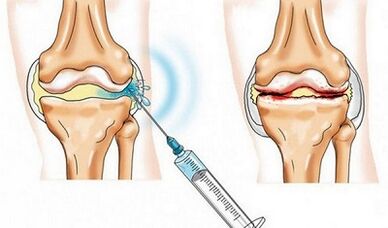
If with non -steroidal anti -inflammatory drugs, it is not possible to relieve knee pain with arthrosis, a blockade is performed - a treatment method in which the drugs are injected directly into the affected tissues to relieve pain and inflammation.In therapy of arthrosis, articular (injections in the articular cavity) and periarticular (into the periarticular cavity) blockade are used.
The main advantage of the method is an instant purposeful action, since with such an introduction the maximum concentration of the active substance is created precisely in the inflammation zone.In addition, drugs do not fall into the systemic bloodstream, which significantly reduces the risk of adverse reactions.
In the later stages of gonartrosis, the articular gap narrows, osteophytes grow, joint surfaces are deformed, therefore, only perirticular blockade is allowed.
The blockade of the knee joint for arthrosis can be carried out using anesthetics and corticosteroids.
Anesthetics are usually introduced in combination with steroid hormones to reduce the pain of the procedure.
Hyaluronic acid and chondroprotectors can also be introduced directly into the joint.But in this case, we are not talking about blockade, but about intra -articular injection, since these drugs do not block pain impulses, but trigger the processes of the regeneration of cartilage tissue.
Physiotherapy and manual therapy
The main methods of physiotherapeutic effects that are used in the treatment of arthrosis include:
- laser treatment;
- ultrasound therapy;
- cryotherapy;
- therapy with paraffin and ozokerite;
- Mud.
The main task of all physiotherapeutic procedures is to stimulate blood circulation in nearby tissues, improve the nutrition of cartilage.
Exercise therapy
Pain syndrome forces a patient with gonartrosis to limit motor activity, as a result of which nearby ligaments and muscles atrophy.This condition negatively affects the joint tissues, since it is during movement that the nutrients penetrate from the synovial fluid into the cartilage.If the joint is constantly at rest, dystrophic processes are aggravated.
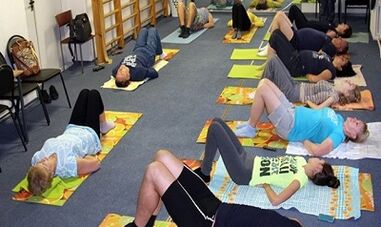
That is why physiotherapy exercises are an integral component of conservative therapy.Moderate physical activity allows you to strengthen the muscle apparatus, enhance the power of articular structures, eliminate stiffness and improve the motor function of the knee.
The exercises of therapeutic exercises are developed by the doctor individually for each patient, taking into account the depth of the lesion and the functional state of the articular structures.
General recommendations for conducting exercise therapy for arthrosis of the knee joint:
- start classes only after stopping signs of acute inflammation;
- Perform all exercises smoothly, without sudden movements;
- the load is increased gradually;
- eliminate high loads on the joint (enhanced flexion/extension of the knee);
- If pain or discomfort appears, stop training.
Diet
With gonarthrosis, products containing: containing:
- amino acids (dairy products, low -fat varieties of meat);
- collagen (dishes with gelatin);
- irreplaceable fatty acids (vegetable oils, fish);
- sulfur and selenium (legumes, cereals, cabbage and apples, beef, chicken, eggs).
It is also important:
- eliminate the use of smoked meats, pickles, marinades;
- limit salt consumption;
- adhere to a 5-fold diet;
- Observe drinking mode.
Excess body weight is one of the main factors provoking the development of arthrosis of the knee joint.Therefore, the task of patients with excess weight is a decrease in body weight.In this case, you can achieve the result only with the help of a diet, since intensive sports are harmful to the inflamed joint.
To reduce body weight, it is recommended to exclude from the menu:
- fatty varieties of meat and fish;
- cream, homemade sour cream and other dairy products with a high percentage of fat content;
- margarine, mayonnaise, various sauces;
- confectionery;
- fast food;
- Sweet drinks.
Surgical treatment
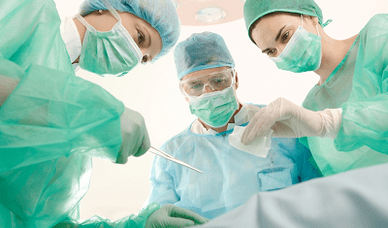
Arthrosis of the knee joint of the 3rd degree is not amenable to conservative therapy, so the operation is the only way out for the patient.
There are two options for surgical intervention:
- Corrective osteotomy- is carried out at the initial stage of development of the 3rd stage of gonarthrosis, if the cartilage is partially destroyed, it is possible to remove osteophytes;
- Endoprosthetics- the replacement of the joint or its destroyed parts is carried out with the complete destruction of the cartilage.
Forecast
Pathological changes in joint structures are progressive, irreversible.However, with early diagnosis and proper treatment, you can completely stop the inflammation and stop dystrophic changes in cartilage tissue - arthrosis of the knee joint of the 1st degree is well lends itself to conservative therapy.
With arthrosis of the 2nd degree, which is accompanied by the destruction of the cartilage and the formation of osteophytes, conservative methods allow you to slow down or suspend the deformation of cartilage, stop inflammation and improve motor activity.However, doctors are often forced to resort to blockade, arthroscopy.
It is impossible to cure arthrosis of the knee joint of 3 degrees in a conservative way.The only way to restore the mobility of the knee is surgical intervention.

























